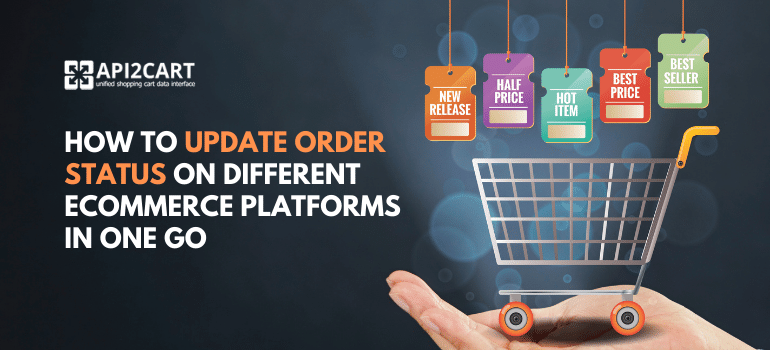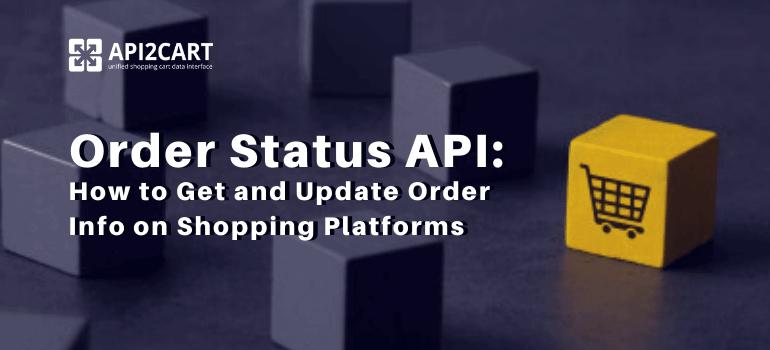
B2B eCommerce software streamline a lot of task of online store owners. They help in handling customers, products, orders, inventories, and shipments across multiple sales channels. Moreover, these systems allow the retailers to perform all the operations from a centralized location.
For most of them an ability to update order status across different shopping platforms is core functionality. However, developing proper integration with eCommerce platforms is quite challenging as well as establishing real-time order status updates.
In this article you will learn how to easily integrate with shopping platforms and marketplaces and update order status on multiple sales channels through one unified API.
Why B2B SaaS Companies Need a Real-Time Order Status Update?
Real-time order status updates are important for almost every B2B eCommerce software no matter what functionality it provides. Here is a comprehensive breakdown of eCommerce software use cases that require real-time order status updates for effective functioning.

1. PIM systems
Product information management systems collect and spread product information across all the eCommerce platforms. As a PIM software vendor, it is important for your system to update order status in real-time while feeding and syncing product information across any eCommerce platform.
Order status updates indicate whether the product is available in stock or not. It also shows the number of items available in a particular category and helps retailers guide their customers throughout their purchase.
2. Warehouse management software
Warehouse management systems are among the top use cases that need to update the order status in real-time. A WMS is a repository of all types of data from online stores be it a product, customer, or order. It needs these data to carry out all the warehouse operations like tracking products, updating inventories, and creating detailed reports.
Real-time order updates help a WMS to increase its order fulfillment speed and accuracy. The status updates notify the system about the number of orders placed on a particular eCommerce platform and the quantity per order. This information helps the WMS process those orders on time and look after the unavailable stock.
3. Marketing automation software
Marketing automation software has enabled e-retail companies to trigger their marketing efforts while streamlining their business operations. Whether it is a campaign or a series of events that take place when a customer makes a purchase, marketers always need an automated system to execute repetitive and ad hoc eCommerce tasks.
Hence, for a marketing automation software to work efficiently and accurately, it has to update order status in real-time so the customers are informed about their purchases correctly. Using real-time updates, the marketers can personalize their emails and win the trust of their customers.
4. Shipping software
Shipping software vendors need to integrate their software with eCommerce platforms so they can update order status on time. Shipment management is among the most important functions of an eCommerce business. To carry out this function effectively, the shipment software needs real-time information about the orders being placed on the eCommerce platforms.
The shipment software uses order information to manage shipping for their corresponding customers. When an order is placed and software is notified about the same, it processes the order for shipping and again sends the updated status to the customers. This way, the shipping software keeps both the retailers and customers informed about the orders.
eCommerce Integration Challenges
Given the importance of eCommerce integration in the contemporary retail industry, the process of integration is backed with a lot of challenges.
Let’s take a detailed look over the pitfalls of developing eCommerce integration:
- Lengthy process
Integration between eCommerce platforms and SaaS applications takes a lot of time. Chunks of code need to be executed to establish a perfect connection between the two systems. It is a complex process that requires a significant time to complete.
Moreover, every shopping cart is different and has its own architecture and logic to be followed. There is a unique and defined process for every shopping cart integration. Hence, you can multiply the time for one integration (almost 8 weeks) with the number of integrations you need per software.
- Highly expensive
Integrations are expensive and you have a large number of them to be established. Moreover, you need an additional development team to write that hefty code for you. The cost of hiring those developers and installing the required infrastructure can go beyond limits.
You need elaborated modules for every integration if you want them to work properly because a poorly working API can cost you double the price of one integration. Hence, you need highly experienced tech enthusiasts to do the job, which requires an additional cost to be incurred. Again, this cost can be multiplied with the number of integrations you need and added with the maintenance cost in the future.
- Unavoidable updates
Integration is not a one-time affair. It is a dynamic process and it needs uniform updates when the shopping carts and marketplaces release their new versions. Don’t forget to count in each shopping cart separately for upgrades and maintenance. This is a constant process and requires a dedicated effort to accomplish it.
Along with shopping platforms, the integrations also need an update to work efficiently. This additional maintenance requires the same process of establishing a connection between the two parties. It is the same as starting all over again with extra time, money, and resources.
So, let us look for an alternative to the process of integration.
How about an API that can perform integrations within a short time span across all the eCommerce platforms?
How Your B2B SaaS Company Can Update Order Status on Multiple eCommerce Platforms via Only One API?
Yes, it is possible for your B2B eCommerce software to update order status and access all other information about orders, products, and customers from eCommerce platforms at once. The masterpiece behind this process is a unified API, provided by API2Cart.
As the name suggests, API2Cart connects your SaaS applications with 60+ shopping carts and marketplaces in one go. All your applications can then retrieve and manage information from these platforms without any additional process.
Here’s how API2Cart helps you update real-time order statuses using a unified API.
API2Cart uses order.update method to update order status info on different eCommerce platforms. In the response structure it shows the updated items, so your system will be able to provide your customers with a real-time order and product updates.
API2Cart not only provides an easy to use method to update order status but also provides other benefits to your B2B SaaS company.
- It provides you the advanced functionality to access all the information about customers, products, orders, and the related data from the eCommerce platforms.
- It opens up new business opportunities for you as every business owner on the eCommerce platforms need SaaS applications to streamline their business operations.
- It reduces all the unnecessary time, money, and resource consumption required for separate integrations.
If you have any questions on how API2Cart works or have it can help you to implement your business cases, you can schedule a consultation call with our representatives or contact us. We also provide a 14-day trial period for you to try the functionality of API2Cart. So, start transforming your business to the next level with us!



